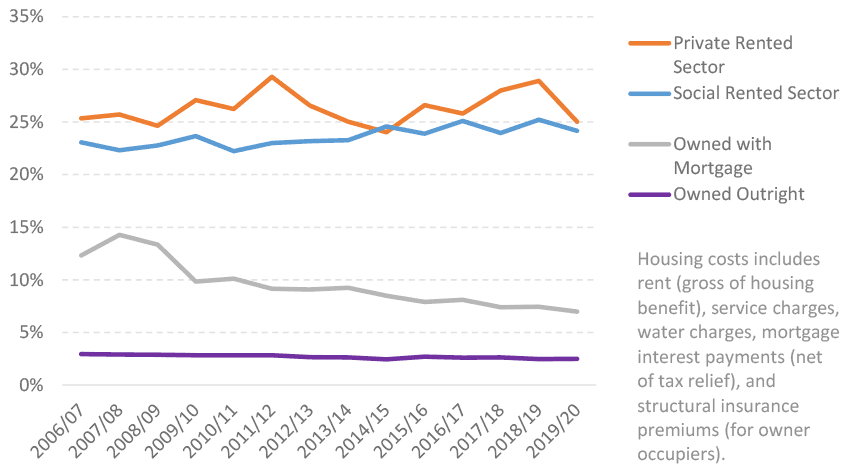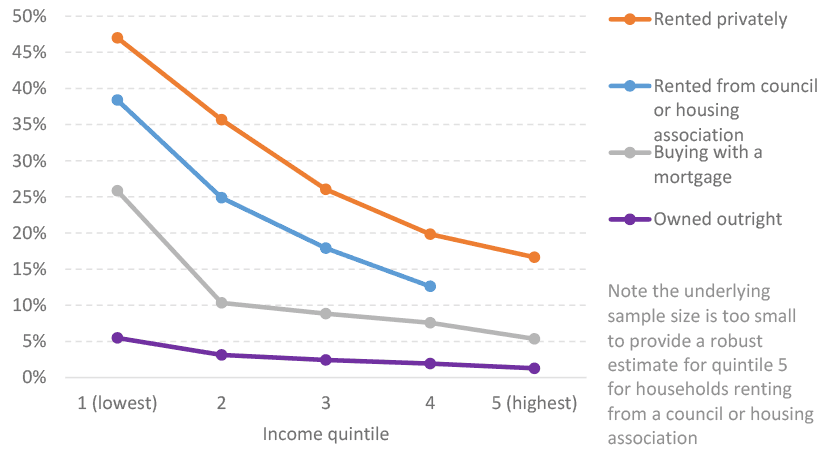Cost of Living Bill: economic background
Summarises recent economic trends which informed the development of the Cost of Living (Tenant Protection) Scotland Bill, which was introduced to the Scottish Parliament on 3 October 2022.
6. Level of vulnerability of households in rental sector
In general households living in the rental sectors have less flexibility than owner occupiers, because their housing costs, relative to their incomes, tend to be higher. This is illustrated by Figure 9, which shows that the housing cost to income ratio is higher on average in the rented sectors, and Figure 10 which shows that households towards the lower end of the Scottish income distribution who live in the rented sectors tend to spend a substantial portion of their income on housing costs.

Source: Family Resources Survey, as reported on in New Deal for Tenants draft strategy consultation.

Source: Family Resources Survey, as reported on in New Deal for Tenants draft strategy consultation.
The rented sectors have a higher proportion of people who are in relative poverty (39% of social rented households and 34% of private rented households, compared to 7% of households buying with a mortgage and 14% of households who own outright), as well as children in relative poverty (47% of social rented households and 40% of private rented households, compared to 10% of households buying with a mortgage and 18% of households who own outright.)[13]
Households in the rented sector are also more likely to be financially vulnerable[14] (63% of social rented households and 40% of private rented households in Scotland categorised as financially vulnerable, compared with 24% of households buying with a mortgage and 9% of households owning outright), which reduces their ability to cope with rental increases and other inflationary shocks.
Contact
Email: Bruce.Teubes@gov.scot
There is a problem
Thanks for your feedback